

Blackout Poetry. There’s something positively thrilling about carrying a pristine bundle of brand new books into your classroom library, introducing them for the first time to wide-eyed students, then seeing this exuberance repeated multiple times — hopefully over many years — on the faces of countless students as they read a great book for the first time.
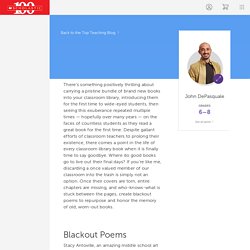
Despite gallant efforts of classroom teachers to prolong their existence, there comes a point in the life of every classroom library book when it is finally time to say goodbye. Where do good books go to live out their final days? If you’re like me, discarding a once valued member of our classroom into the trash is simply not an option. Once their covers are torn, entire chapters are missing, and who-knows-what is stuck between the pages, create blackout poems to repurpose and honor the memory of old, worn-out books. Blackout Poems Stacy Antoville, an amazing middle school art teacher in New York City, first introduced me to blackout poetry. Mr. Featherstone's Class Blog. Mr. Feathersone's Class Blog. The “Living Is…” Podcast Project: Connecting Hamlet to Our Lives. Act I - Entry Events Entry to project: Podcasting is all the rage with adults, but our English 10 students needed a little introduction into the phenomenon.
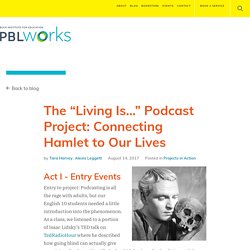
As a class, we listened to a portion of Isaac Lidsky’s TED talk on TedRadioHour where he described how going blind can actually give you vision. Students identified what Lidsky described as living and then created anchor charts where they differentiated between living and existing. Entry to text: In order to engage students into a text that oftentimes feels daunting, students were asked to participate in an improv skit of a scene in the play. Students were randomly assigned in groups of 3-5. Act II - Digging into text Before we could really kick off the project itself, we needed to get students deep into the text to begin answering our driving question—what is the difference between living and existing? Students participated in jigsaw activities that intertwined the text and the project. Act III - Assessment of skills. The "Living is..." Podcast Project. High School Photography Portfolio.
High School Photography Portfolio. BookSnaps with Independent Reading. BookSnaps with Independent Reading. Pen Pals in the 21st Century. As they enter the room, I wave the big yellow envelope in the air.
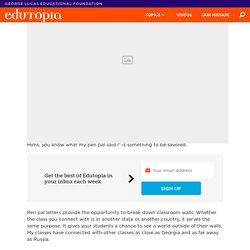
They know what it is, and the room comes alive with excitement. They can barely wait until I open the envelope and pass out the contents. Their pen pal letters have arrived! With Tech, Who Needs Pen Pals? With the introduction of technology in the classrooms, I felt as though pen pals had become a thing of the past. Pen pal letters provide the opportunity to break down classroom walls. This year, I took advantage of Skype in the Classroom and connected with a class in Spain. Pen pal letters also provide an avenue to create better writers via an authentic audience. Many states have implemented Common Core, and letter writing is not a part of the Common Core standards.
Making Connections. Pen Pals in the 21st Century. Miteen Writers - An Online Teen Literary Magazine. MIteen Writers - An Online Teen Literary Magazine. To Tweet or Not To Tweet? Shakespeare Twitter Assignment. To Tweet or not to Tweet? (Shakespeare Twitter Assignment) For the Love of Flipgrid. For the Love of Flipgrid. Have you tried Flipgrid with your students yet?
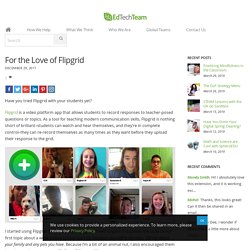
Flipgrid is a video platform app that allows students to record responses to teacher-posed questions or topics. Improving Pronunciation and Self-Confidence with Flipgrid. Improving Pronunciation and Self-Confidence with Flipgrid. It’s a teaching approach – combined with FlipGrid – that’s lead to profound shifts in my student’s speaking skills, and their confidence in front of a camera.
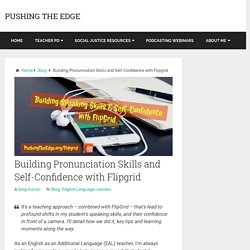
I’ll detail how we did it, key tips and learning moments along the way. As an English as an Additional Language (EAL) teacher, I’m always looking for innovative ways to help improve my adult students’ pronunciation and self-confidence. Oona Marie Abrams suggested the tool Flipgrid (thanks Oona). The impact has been marked. In all my years of teaching in the adult sector I’ve not seen anything have the same affect as the teaching approach I employed with Flipgrid. Fake Twitter Template - Choose Awesome. Choose a Fake Twitter Template. If you haven’t figured it out yet, I love Twitter! Not only is it great for my professional development as a teacher but it’s entertaining as well. It’s popularity is increasing in Australia and our students are increasingly taking to it to follow and engage with their favourite sports stars, musicians and celebrities.
I’ve always liked the idea of having students create fake Twitter or Facebook profiles of historical figures, fictional figures or even parody accounts, to delve deeper into the understanding of history, a character in a novel or society. Just this week I saw a fantastic account by the name of @TitanicRealTime that tweeted as though it was reporting from the Titanic more than 100 years ago.